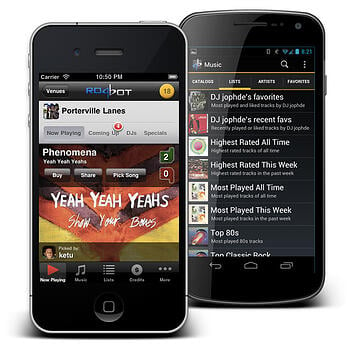
What if we told you there's a restaurant marketing strategy that is modern, low touch, highly effective, and – most notably – free? In fact, it runs off a scalable resource your company has directly in hand – your restaurant employees.
From your servers to your cooks, your employees' personal social media networks amount to thousands of potential customers you can reach. Unlock your simplest and most lucrative marketing channel just by empowering your team on social media so they share your brand across the Web. Word of mouth is king.
Creating your Facebook and Twitter pages are just the baby steps--in order for your posts to be valuable, you must have a dedicated team of advocates to share this content with receptive networks of trusting followers. Hint, hint--your employees! According to this study, an employee sharing content to their networks has up to 20 times more impact than when the brand does it.
Why engage my employees on social media?

Instead of paying cash for pricy ad space or a fancy marketing campaign, your advocacy program only requires you to milk an existing marketing vehicle: staff who are already being paid and are currently active on social media. Restaurant employees in particular are generally very well connected both internally and externally, and will provide valuable word of mouth. Using this employee investment as social capital is a low risk, high return transaction.

Wide Reach
By engaging all of your employees, from diverse wait staff to different specialty chefs, you will tap into a wide spectrum of specific networks. Each employee can communicate about the brand uniquely in conjunction with his or her own role, resulting in authentic, personalized content to relevant audiences. Content shared by employees receive eight times the engagement of content on branded channels.

Trustworthy Content
As modern consumers become more fluent in the saturated media landscape, they are straying away from impersonal, mass-distributed corporate ads. Traditional automated pre-packaged push marketing kills much of the benefit (and the point) of being socially connected. You need personal voices of authentic brand advocates to convincingly communicate with your customers.
According to this marketing report, 92% of people trust individuals they know, whereas advertising is only trusted by 14% of people. Within advertising, ads with social context drive more sales and four times more purchase intent than ads without. Getting your employees to advocate on behalf of your brand communicates transparency and authenticity, resulting in twofold benefits of a more trusted brand image and ultimately more conversions.

Automation
Perhaps the best part of establishing an employee advocacy program is that, if successful, it becomes automated and self-sustaining, not really requiring a full-time manager. The best advocates of your business are the ones who are already a part of it and rely on its success. Employees have vested interest in positive outcomes for your business, so once they have developed social sharing habits, they will likely continue to keep sharing valuable information supporting the brand.
How do I manage my employees on social media?

Align employee advocacy program with business objectives.
First and foremost, it is important to align the program with a key existing business goal to help get employee buy-in. Whether that’s brand awareness, lead generation, customer retention, recruiting, or employee engagement, specific goals and time frames will help drive results.
Examples of specific targets range from driving participation in an upcoming event, to promoting a new location, to advertising a fundraising initiative. Providing more tangible goals will also help you measure the results against particular objectives, such as leads generated in a campaign or registrations for a particular event.

Offer basic training and governance in social media practices.
Before dumping a bunch of content on your employees and letting your reins loose on them in the public social media sphere, it is important to set clear guidelines. Your employees will effectively serve as official spokespeople of your brand, so you need to make sure they understand how to use the tools tastefully, responsibly, and effectively. Zappos, for instance, offers free Twitter trainining classes to employees to educate them on best practices. Check out the social media policies of top corporations for inspiration.
It may also be smart to encourage your employees to post not just with certain business objectives in mind, but also according to their own responsibilities, capabilities, and local business objectives so that they come off as authorities with genuine content.

Make it easy for your restaurant employees to share.
To make it easy on your employees, provide some content they can easily share, publish, or otherwise repurpose in their own networks. This doesn’t have to be as taxing as it sounds. You can share existing content, either from your own restaurant/chain or from third-party media. Examples include thought leadership pieces, job listings, new service offerings, press releases, coupons, or other promotions related to the goals you set in Step 1.
Gamifying the program will also foster sharing. Whether it’s a point system, prizes, or badges, rewarding participation will fuel employee eagerness to get involved. Recognizing employees that are being active and productive will encourage them and others to get more involved
While organic sharing should be enough given that you provide solid content, you can take it a step further and consider using a leading employee advocacy software platform to help your employees share content even more easily.

Identify and track employee engagement.
In order for your advocacy program to function as an effective marketing campaign, it is really important to track all activity. How many times was each piece of content shared? Which employees were the most active? How many clicks were generated per share? It would also be good to find a way to measure external engagement and results. There are various softwares that make this process very simple. The more data you manage to gather, the more you will be able to iterate and improve upon your employee advocacy program.
In order to keep employees engaged, it is also really important to continuously foster a culture that encourages advocacy. If the culture isn’t right, employees are generally dissatisfied or poorly treated, then the program will inevitably suffer. Survey your existing employee culture and only implement an advocacy program if you believe your employees will likely engage positively. Otherwise, your marketing efforts may be better directed towards funding SEO advertising, other marketing campaigns, or employee satisfaction improvements. Once you’ve established a solid culture, your advocacy program will self perpetuate. Watch your social channels flourish and business grow.
For more actionable tips on social media, download our free white paper.





